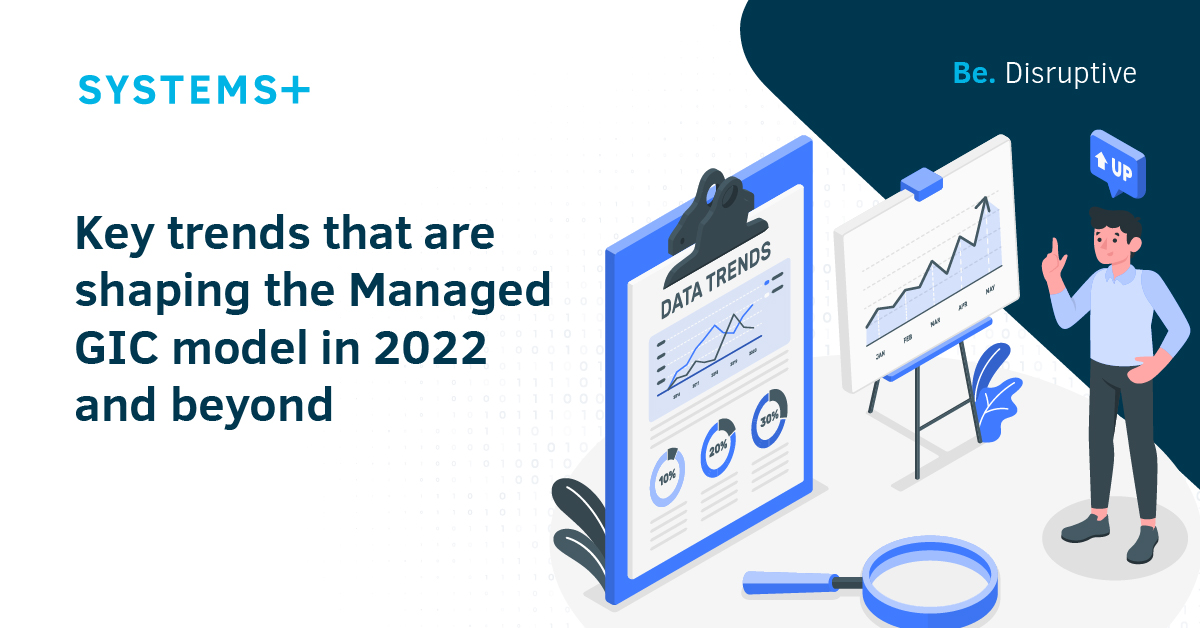Key trends that are shaping the Managed GIC model in 2022 and beyond

Global In-house Centers (GICs) and Managed GICs have scripted an incredible success story from merely being a delivery center for businesses to becoming a strategic hub providing value-added services.
MGIC are increasingly focusing on high-value activities like IP creation and building competencies and expertise around emerging technologies and reinventing its business models. MGICs today are a core pillar of the organization’s strategy, objectives, and success.
Over the last 35 years, Systems Plus has helped Global Retail and Logistics giants build, establish and manage their Global in-house centers. Based on our experience and learnings in this sector, we have laid out some key trends that will shape the future of MGICs and drive change. In this article, we explore these trends and look at how they will signal a shift in how MGICs operate.
Laying the foundation for building the right leadership, culture and mindset should be a top priority for GICs while expanding.
For unlocking business growth it’s imperative that MGICs need to invest in next-generation business leaders to lead the way.
To support the growing complexity of the business and aim for a higher output level MGICs must have a strong leader with the domain expertise to steer the organization through challenges and drive the business’s strategic objectives.
Regular training and mentorship programs would help teams upskill themselves and stay informed, creating a future-ready, competent talent pool.
Continuous learning, upskilling, training, and mentoring programs would help teams stay on top of the new technologies and trends creating a future-ready workforce.
Accountability and autonomy in business decisions and strategic planning results in better outcomes. Today, MGICs are taking ownership of key enterprise priorities that bring improvements to enterprise profitability. This level of accountability has unfolded a greater avenue for MGICs and has brought about a key shift in the way GICs are being operated.
Today, leaders at GIC have a seat at the table and they collaborate in decision-making. They are managing business-critical efforts, engaging with customers, and contributing to planning & strategic decisions. This goes on to highlight the diminishing distance between MGIC and the enterprise.
The culture of an organization is critical to its success and sustainability. A reimagined culture of innovation and agility can pave the way for embracing new technologies with cross-functional collaboration and drive business growth.
Such a dynamic culture also creates an attractive employer brand, which further helps in attracting top talent. MGICs need to build a sense of community with a shared purpose, values and combine it with capabilities that enable them to experiment and innovate.
An employee-centric work culture, a lean and agile model, and a dynamic attitude are some of the key attributes that can help scale up MGIC’s performance.
MGICs have witnessed a significant evolution in the past few years from merely being cost arbitration centers to now being hailed as innovation centers. The majority of MGIC’s workload was centered around executing repetitive back-office processes in a cost-efficient manner. But over time, as this ecosystem evolved, MGICs have been increasingly involved in strategy. Innovation and shaping business processes. From not being limited to being mere cost-saving establishments, MGICs continue to evolve rapidly in terms of innovation and business strategic planning.
MGICs are emerging as innovation hubs enabling product and service innovation, agility, and operational efficiency. for global markets. Today, MGICs have been leveraging emerging technologies, trends, and paradigms to drive exponential business growth.
In summary, Managed GICs have come a long way in the last few years and today they offer a very compelling alternative to the traditional third-party outsourcing for global organizations. At the same time, the MGICs have become a very exciting avenue for the IT talent pool to build careers and stand out at a global level.
We believe that talented people do great things by creating great processes and we have designed our Virtual Captive outsourcing model to be a “people first” model so we can apply the best talent to generate the very best results for our clients.
Managed GIC teams have more experienced resources that bring the very best talent to the client’s business processes. Also, the model has a lower turnover which offers better knowledge retention and intellectual property protection than legacy providers.
Finally, the MGIC model operates with a speed and agility that can adapt to a client’s changing business needs. The model also costs less, often 40% less than traditional legacy outsourcing. Our clients are operating their Virtual Captive teams at less than $20 per hour.
The combination of better outcomes at lower costs creates a compelling value proposition.






